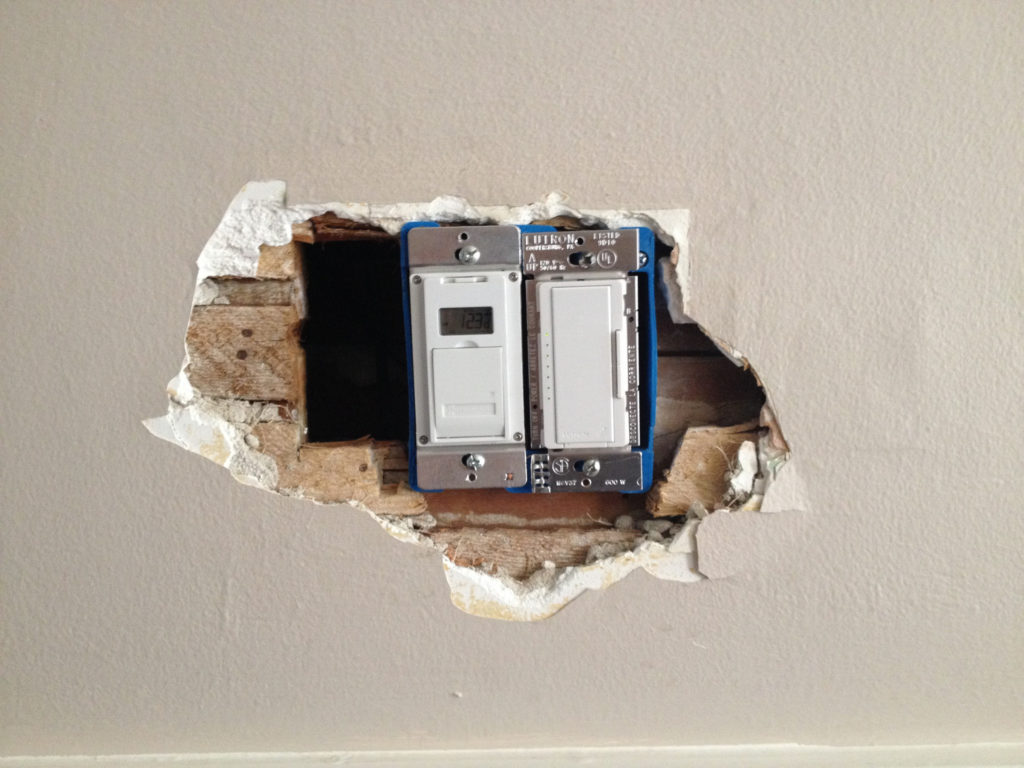Need repairs? Take a look at these 5 common home maintenance problems and how to easily fix them.
1. I’m ready to move out of my apartment. How can I patch holes in the drywall?
Answer: The lightweight, acrylic spackling compounds are a do-it-yourselfer’s dream. They go on in one coat and don’t shrink. Gouge out any loose material and apply it with your fingers, flush with the wall. You can even dabble with some wet paper towel to match the textured surface. Let the spackling dry overnight before sanding and painting, and, incidentally, if you spill any of the stuff on the carpet, let it dry before vacuuming.

Photo Credit: Lorelei (Flickr).
2. I have a sewer gas odor in the basement only in the evenings, in cooler weather and on windy days. Can you help?
Answer: First, make sure all the drains are OK and are sealed. Run water into them once a week — or pour 1½ pints of mineral oil in as a more or less permanent seal. This would include the floor drain, shower or tub, and the lavatory. Also, check the washing machine. Older plumbing pipes can be overwhelmed by the high-flow-rate output from new washing machines; the trap evacuates, letting in sewer gas. To check this, temporarily seal the washer hose with duct tape as it enters the drain.
You also can check on the roof. Sometimes those vent pipes aren’t high enough to let the wind carry away the fumes. They also can get plugged with dried waste products, so have a sewer cleaning company take a look. You didn’t say whether you have a septic system. They are more likely to produce odor problems than city sewers. You can buy odor filter caps for the vent pipes on the Web. For starters, check out sweetair.com
3. We are at 10,000 feet. I have a wood entry door that’s in rough shape. Which would be the best type to replace it, fiberglass or steel?
Answer: High elevation or not, I really like the fiberglass product. It is very stable, doesn’t warp or twist and seems to take temperature extremes with ease. If yours is a south-facing entry with year-round sun, I probably would avoid installing a storm door in front of the new fiberglass unit. Heat from the sun becomes trapped in that space between the doors; the high-density foam in the new door will not let it escape readily into the house. So the temperature soars in that space, and that can seriously deteriorate the finish and shorten the life of the door.
Otherwise, I’d recommend painting — not staining — your new door. Prime it first with KILZ, then apply a high-quality exterior, acrylic latex topcoat (two coats each).

Photo Credit: Johnny Jet (Flickr).
4. We have white cabinets with some sort of plastic or acrylic finish. We are having a heck of a time repainting them. We can’t get anything to stick. Any ideas?
Answer: This is one for your local paint store. Take a drawer out and show it to the experts. Almost always, the selection of the right primer is the key to recoating these surfaces. But, if your cabinets are really covered with some sort of plastic laminate or melamine, they may not be paintable at all.
5. We are going to put in a pet door for our cats. Any ideas how we can keep out unwanted critters?
Answer: I would put in two cat doors: one into the garage, and one from it to the house. Wild animals might check out the garage but may be reluctant to proceed through the next door. My experience has shown that the real worry here is other domesticated cats. They tend to follow their new-found friends almost anywhere. Of course, you’ll want to use that slide-in barrier at night to keep your felines in as well as others out.

Photo Credit: faulit (Flickr).
One caveat, though. If you do cut a hole in your house/garage wall, you’ll probably be violating the “firewall” requirements of the building code. Extra-thick drywall on the garage side helps keep fire at bay until the firefighters arrive. Generally, “no holes allowed” is the rule. The same principle applies to the door between the house and the garage. It is also required to be fireproof and so is probably solid-core wood or steel.
Ken Moon is a home inspector in the Pikes Peak region. His radio show airs at 9 a.m. Saturdays on KRDO, FM 105.5 and AM 1240. Visit www.aroundthehouse.com.

 Home Maintenance Photo Credit: alfexe (iStock).
Home Maintenance Photo Credit: alfexe (iStock). 



Comment on: 5 Home Maintenance Problems and How to Fix Them